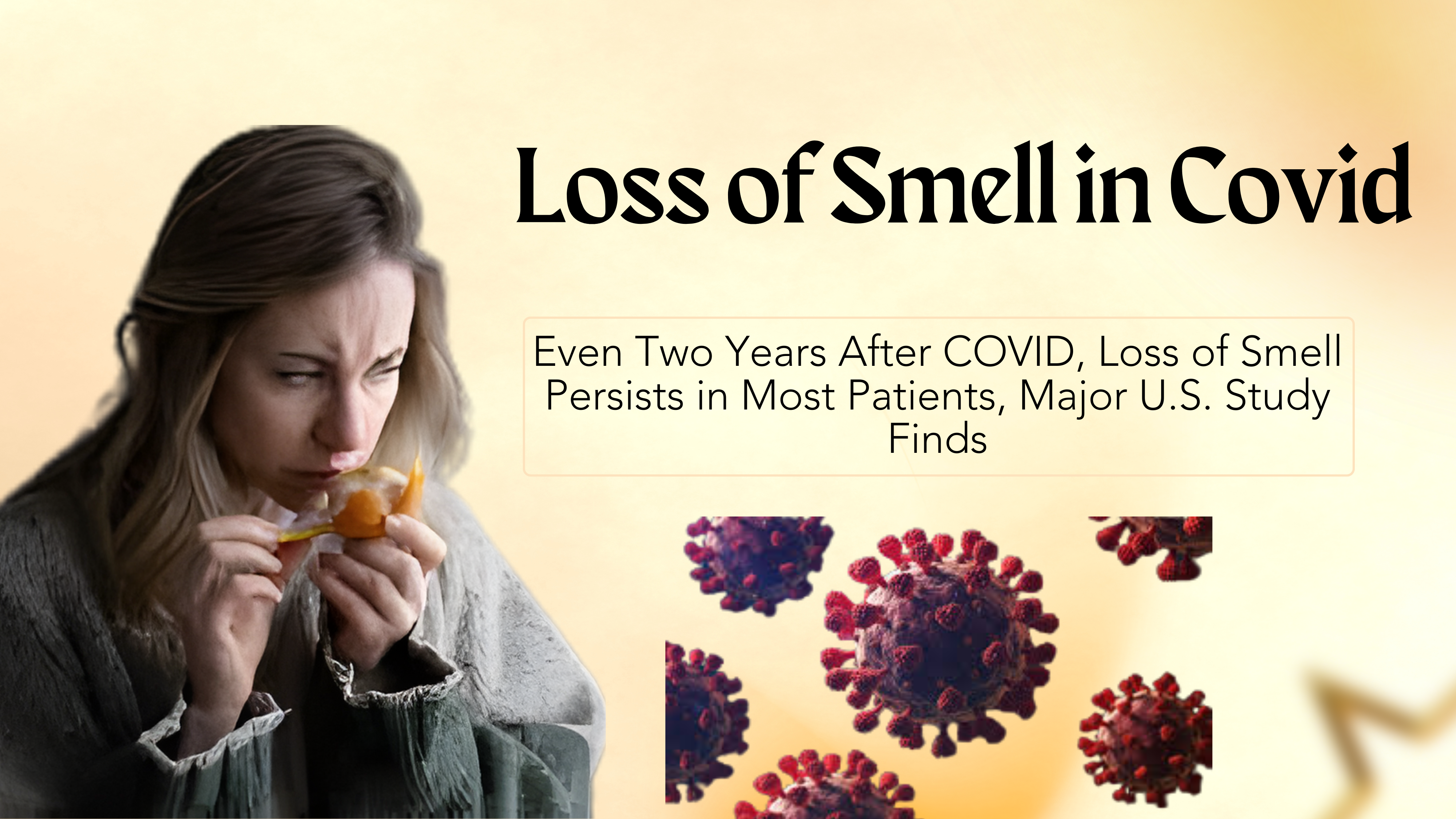Introduction “The Moment Between Science and a Heartbeat” In the quiet hum of an IVF laboratory, a moment unfolds that […]
Loss of Smell in Covid

Even Two Years After COVID, Loss of Smell Persists in Most Patients, Major U.S. Study Finds
A new large scale U.S. study conducted by Leora I. Horwitz et al., as part of the NIH’s RECOVER (Researching COVID to Enhance Recovery) Initiative, has revealed that the lingering loss of smell, one of the earliest and most recognisable symptoms of COVID-19, can persist for years after infection, even among people who believe their senses have fully recovered.
The research, published in JAMA Network Open in September 2025, analysed data from over 3,500 adults as part of the NIH funded RECOVER initiative, which tracks the long term effects of SARS CoV 2 infection. The findings challenge the popular belief that smell loss after COVID-19 is short lived and suggest that millions worldwide may still be living with undiagnosed sensory impairment.
This was a large prospective cohort study conducted at 83 sites across 35 U.S. states and territories, following the STROBE (Strengthening the Reporting of Observational Studies in Epidemiology) guidelines. A total of 3,525 adult participants were included, 2,956 with prior SARS CoV 2 infection and 569 uninfected controls. Participants were tested at a mean interval of 671.6 days (approximately 1.8 years) after the index infection date.
To measure olfactory function, the researchers used the UPSIT (University of Pennsylvania Smell Identification Test), a well established and reliable 40 item “scratch and sniff” multiple choice test with four response options per odour. Participants had to answer all questions, even if they couldn’t identify the smell.
UPSIT Score Interpretation:
Normal: ≥34 (men), ≥35 (women)
Mild microsmia: 30–33 (men), 31–34 (women)
Moderate microsmia: 26–29 (men), 26–30 (women)
Severe microsmia: 19–25 (both)
Anosmia: <19
What Causes Loss of Smell in SARS CoV 2
Loss of smell (anosmia) in COVID-19 occurs due to the virus’s direct effect on the olfactory nerve cells that detect odours. It also targets supporting cells, the sustentacular and basal cells, located in the olfactory epithelium, the thin tissue layer at the roof of the nasal cavity.
These supporting cells contain the receptors and enzymes the virus uses to enter human cells. Once infected, they trigger inflammation in the nasal lining and disrupt the environment required for olfactory neurons to function properly. As a result, the neurons lose their ability to transmit smell information to the brain, causing a temporary shutdown of the sense of smell.
While many patients recover once inflammation subsides and damaged cells regenerate, in some cases the process is prolonged or incomplete, leading to persistent or even permanent smell loss. Emerging research also indicates that COVID-19 may affect brain regions involved in processing smell, such as the olfactory bulb, orbitofrontal cortex, and parts of the temporal lobe. Neuroimaging studies have shown reduced gray matter volume in these regions among patients with ongoing smell loss, suggesting a link between peripheral and central nervous system damage.
Results of the Study
Participants were divided into four groups:
Infected with self reported smell or taste loss or change (n = 1,393)
Infected without self reported smell or taste change (n = 1,563)
Uninfected with self reported change (n = 9)
Uninfected without self reported change (n = 560)
Among infected participants with self reported smell or taste loss, 79.8 percent showed measurable hyposmia on UPSIT testing, and 23 percent had severe microsmia or anosmia. Even among those who denied any smell change, 66 percent were found to have hyposmia, revealing widespread, hidden olfactory dysfunction. Interestingly, even 60 percent of uninfected controls showed some degree of hyposmia, suggesting a baseline prevalence in the general population.
Link Between Smell Loss and Cognitive Dysfunction
The study also found a strong association between smell loss and cognitive impairment. Cognitive problems mean difficulty in mental functions like thinking, remembering, and concentrating. Many recovering COVID-19 patients describe this as “brain fog,” feeling mentally slow, forgetful, or unable to focus despite appearing physically fine.
In this study, 66.1 percent of infected participants with self reported smell loss experienced cognitive difficulties, compared to 32.7 percent of those without smell loss. Their average Neuro QoL Cognitive Function T score was 38 (12th percentile), significantly below the population median of 50.
Is This Treatable?
Currently, there is no single proven therapy, but several options are being explored: Olfactory training, which involves repeated exposure to specific scents over weeks to stimulate neural recovery. Platelet rich plasma (PRP) injections administered into the olfactory cleft to promote regeneration. Intranasal corticosteroids and vitamin A to reduce inflammation and support mucosal healing. These treatments remain investigational but may aid rehabilitation when paired with early diagnosis and consistent follow up.
The “Stratus” Variant and Smell Loss
The Stratus variant (also called XFG variant) is a recombinant form of SARS CoV 2 that emerged in early 2025. It developed from two Omicron sub lineages and is currently classified by the WHO as a “Variant Under Monitoring.” It spreads more easily than earlier strains but does not appear to cause more severe illness.
In terms of symptoms, the Stratus variant presents similarly to older variants, with fever, sore throat, cough, tiredness, and body ache. Loss or change of smell and taste continues to be reported but not more frequently than before.
Conclusion
This study reinforces that COVID-19 is not merely a respiratory illness. Its effects extend beyond the lungs, affecting the brain, sensory pathways, and overall quality of life. The loss of smell, though often overlooked, can lead to emotional distress, poor appetite, social isolation, and even safety risks such as being unable to detect smoke or gas leaks. Persistent anosmia deserves medical attention and awareness, as it continues to affect millions silently, even years after recovery.


